The Thuret family of clockmakers established themselves as one of the outstanding craftsman-dynasties in 17th- and 18th-century Paris. Their clocks are signed "Thuret", and distinguishing which member of the Thuret family made a specific clock is sometimes an unrewarding effort.
Isaac II Thuret (1630–1706), one of the first French clockmakers to make pendulum clocks, [1] held the royal appointment. His son Jacques III Thuret (1669–1738), was appointed clockmaker to Louis XIV of France in 1694. A perquisite of the royal appointment was the use of workshops in the Galeries du Louvre, where since the time of Henri IV, the outstanding artists, designers and craftsmen were granted workshop spaces, fostering cross-fertilisation among the arts. As one consequence there are numerous clocks by the Thuret dynasty in cases of rich tortoiseshell and brass marquetry designed by André Charles Boulle; one such remarkable clock by Jacques Thuret or his father is at the Metropolitan Museum of Art in New York. [2] Another example, the Barometer Clock, is at the Frick Collection, also in New York. [3]
Jacques III Thuret married a daughter of the royal designer Jean Bérain the Elder, whose designs he assembled and published; his daughter Suzanne married the painter, draughtsman and engraver Charles François Silvestre. [4]

François Boucher was a French painter, draughtsman and etcher, who worked in the Rococo style. Boucher is known for his idyllic and voluptuous paintings on classical themes, decorative allegories, and pastoral scenes. He was perhaps the most celebrated painter and decorative artist of the 18th century.

Jean-François Oeben, or Johann Franz Oeben was a German ébéniste (cabinetmaker) whose career was spent in Paris. He was the maternal grandfather of the painter Eugène Delacroix.

Bernard van Orley, also called Barend or Barent van Orley, Bernaert van Orley or Barend van Brussel, was a versatile Flemish artist and representative of Dutch and Flemish Renaissance painting, who was equally active as a designer of tapestries and, at the end of his life, stained glass. Although he never visited Italy, he belongs to the group of Italianizing Flemish painters called the Romanists, who were influenced by Italian Renaissance painting, in his case especially by Raphael.
Events from the year 1792 in art.
Events from the year 1772 in art.
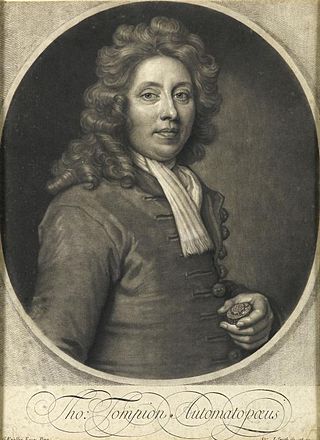
Thomas Tompion, FRS (1639–1713) was an English clockmaker, watchmaker and mechanician who is still regarded to this day as the "Father of English Clockmaking". Tompion's work includes some of the most historic and important clocks and watches in the world, and can command very high prices whenever outstanding examples appear at auction. A plaque commemorates the house he shared on Fleet Street in London with his equally famous pupil and successor George Graham.
Events from the year 1715 in art.
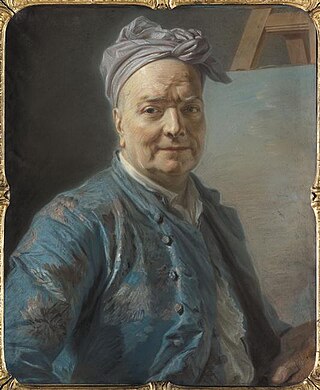
Louis de Silvestre, also known as Louis de Silvestre the Younger, was a French portrait and history painter. He was court painter to King Augustus II of Poland, and director of the Royal Academy of Arts in Dresden. He is sometimes called "the Younger" to distinguish him from his older brother Louis Silvestre the Elder, drawing-master to the Dauphin.
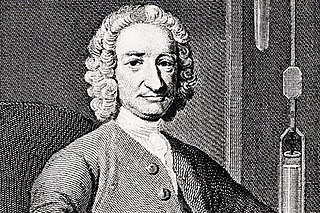
Daniel Quare was an English clockmaker and instrument maker who invented a repeating watch movement in 1680 and a portable barometer in 1695.

Benjamin Vulliamy, was a British clockmaker responsible for building the Regulator Clock, which, between 1780 and 1884, was the main timekeeper of the King's Observatory Kew and the official regulator of time in London. In 1773 Vulliamy had received a Royal Appointment as the King's Clockmaker.

Gabriel Huquier (1695–1772) was an entrepreneurial French drawer (artist), engraver, printmaker, publisher, and art collector, who became a pivotal figure in the production of French 18th-century ornamental etchings and engravings
Jean de Court used painted Limoges enamel and oil painting, and served as official portrait painter to the monarchs of Scotland and France. The de Court dynasty of enamel painters ran a workshop making Limoges enamel over several generations in Limoges in south-western France.

Jean-Pierre Latz was one of the handful of truly outstanding cabinetmakers (ébénistes) working in Paris in the mid-18th century. Like several of his peers in the French capital, he was of German origin. His furniture is in a fully developed rococo style, employing boldly sculptural gilt-bronze mounts complementing marquetry motifs of flowers and leafy sprays, in figured tropical veneers like tulipwood, amarante, purpleheart and rosewood, often featuring the distinctive end-grain cuts. He also produced lacquered pieces, most famously the slant-front desk in the collection of Stavros Niarchos, Paris.
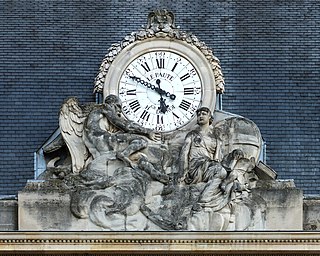
Jean-André Lepaute, together with his younger brother Jean-Baptiste Lepaute, was a founder of an outstanding French clockmaker dynasty of their day, holding the brevet horlogers du Roi. His brother assumed his workshop in 1774, when Jean-André retired; he died after a long illness at Paris.
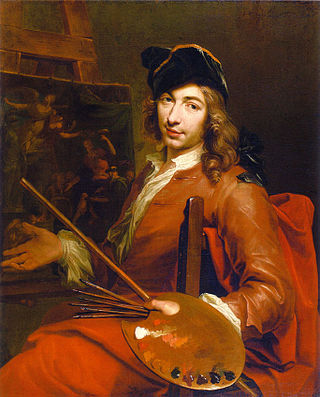
Zeger Jacob van Helmont, was a Flemish painter and tapestry designer who specialized in portraits and history paintings. He trained with his father in Antwerp but spent his active career in Brussels where he worked for the local churches and tapestry works.
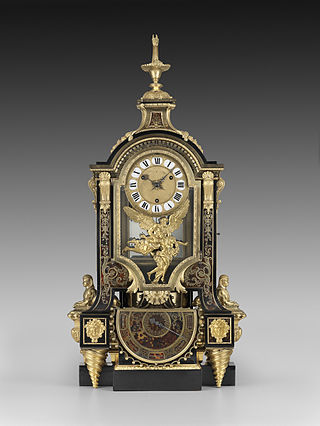
Barometer Clock (Boulle) by André-Charles Boulle is a late seventeenth-century French clock created out of ebony, turtle shell, brass, gilt bronze, and enamel. The clock case is decorated on all sides and was intended as either a centerpiece or for display on a mantel in front of a mirror. The centerpiece of the clock is a relief of "Father Time Carrying Off Truth."

Charles Oudin is one of the oldest French horology firms. It was founded in Paris at the end of the 18th century by Jean-Charles Oudin, who came from a family of clockmakers in Northwest France. There were four generations of Oudins who were clockmakers, as of the mid 18th century, first in the Meuse region and later, in Paris. Several members of the Oudin family worked for the master watch and clockmaker Abraham-Louis Breguet.
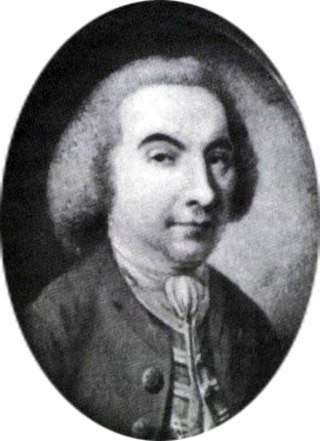
Isaac Rousseau was a Genevan master-clockmaker.

Antoine Cronier, or Crosnier, was a noted clockmaker active during the second half of the 18th century in Paris, France.